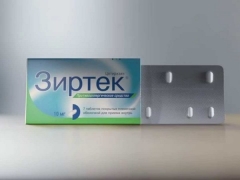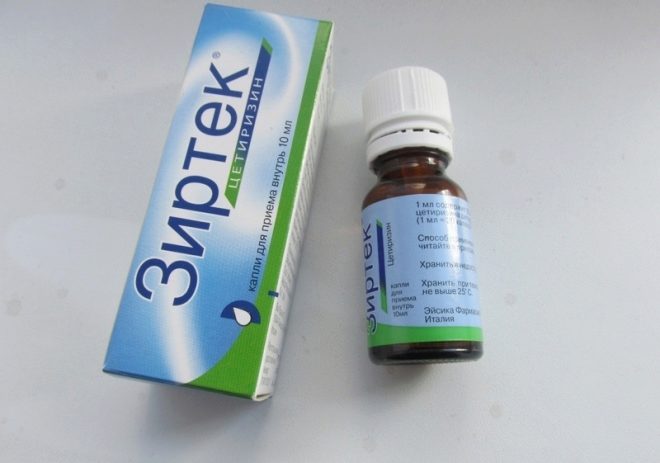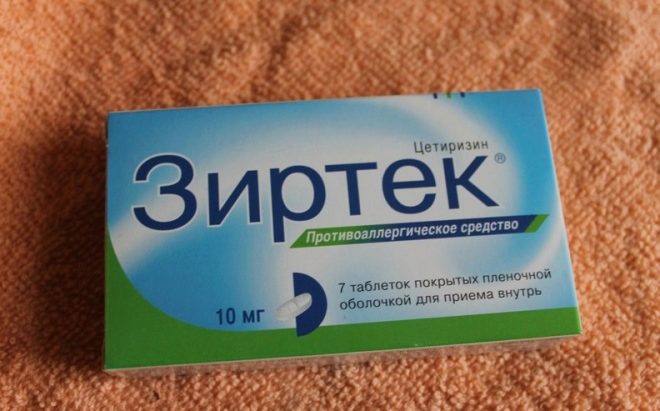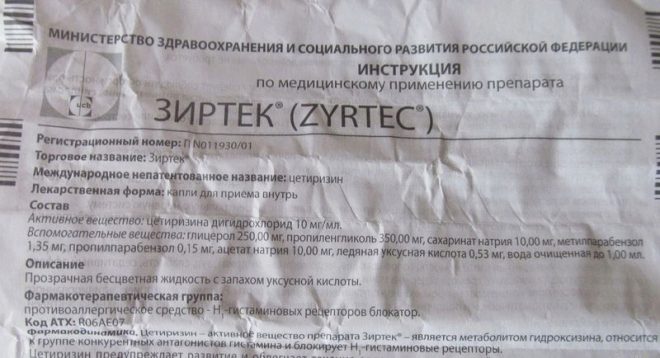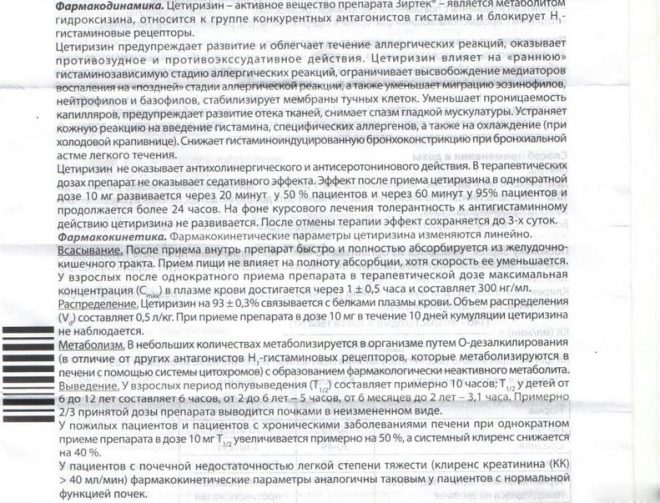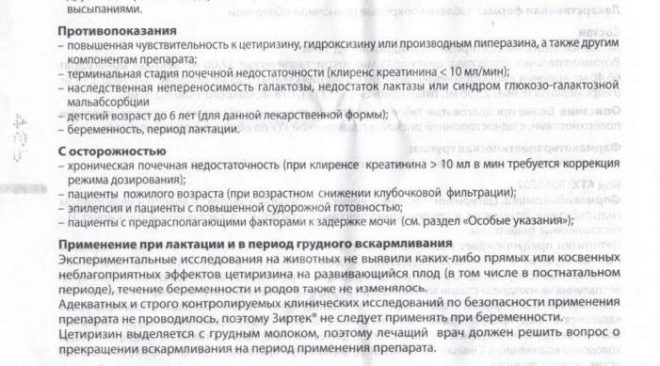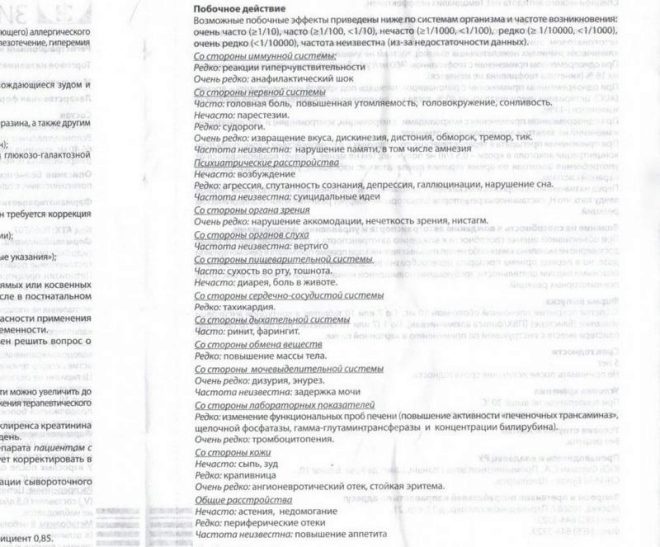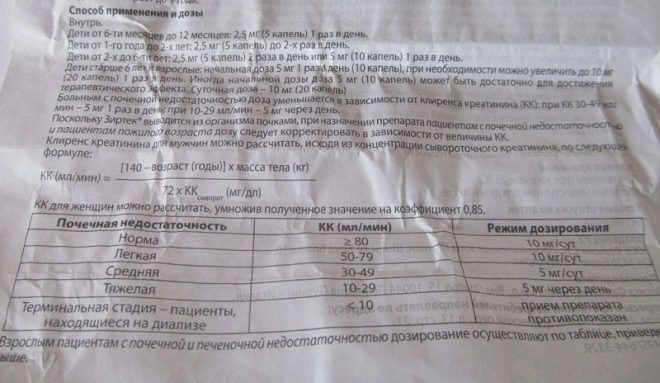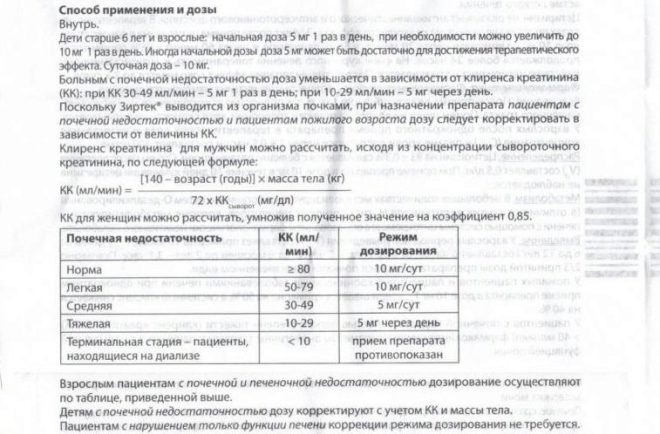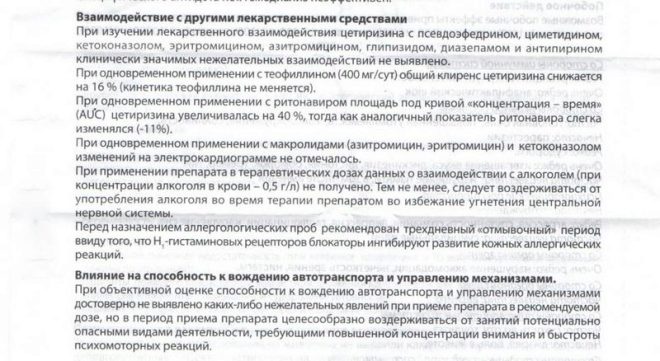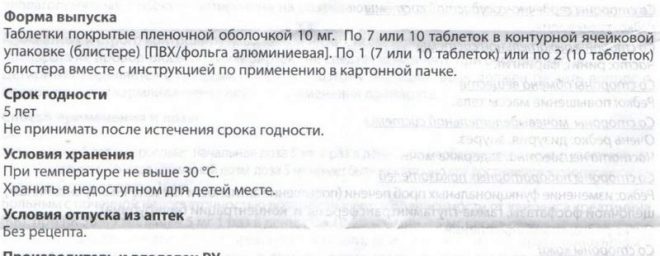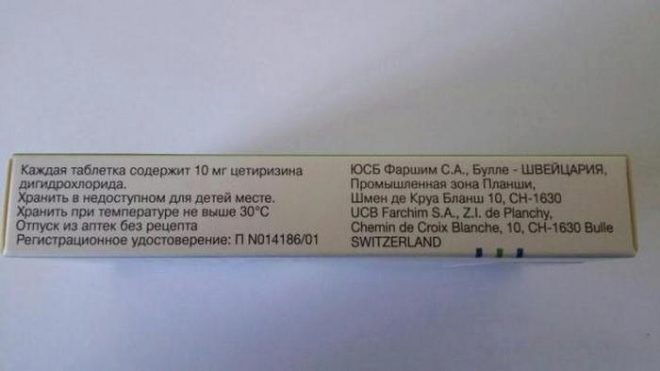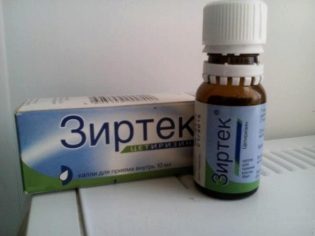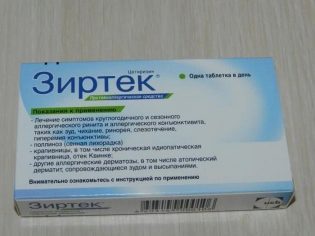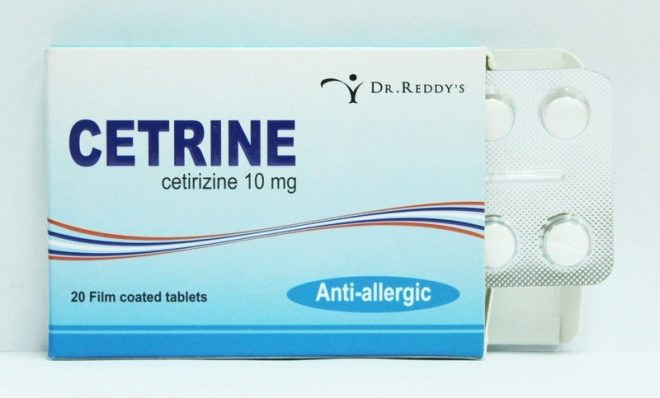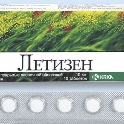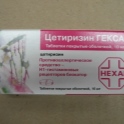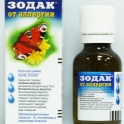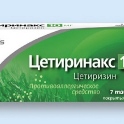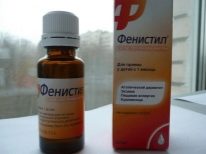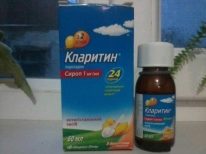Zyrtec for children: instructions for use
Antihistamines, which belong to the second generation, effectively help with allergies in adults. One of these modern drugs is Zyrtec. Can children be treated with this medicine and how does the children's organism react to it?
Release form
Zyrtec is available in two different forms:
Drops, which are taken inside. This is a clear solution with a slight smell of acetic acid. This liquid is colorless and poured into glass dark bottles of 10 ml and 20 ml. The bottles are closed with a special dropper cap, on which there is a picture showing the correct way to open the bottle.
Pills, which have a film shell. They are characterized by white color and convex on both sides oblong shape. One blister can include either 7 or 10 tablets, and 1 or 2 blisters can be sold in one cardboard box.
Composition
The main component of any form of medicine that provides antiallergic effect is cetirizine in the form of dihydrochloride. One milliliter of drops contains 10 mg of this compound. The same amount of cetirizine is in one pill.
Auxiliary components of the liquid form are acetic acid, purified water and glycerol. They are composed of droplets supplemented with propylene glycol, methyl parabenzene, propyl parabenzene, saccharinate and Na acetate.
Inside the tablets, cetirizine is combined with colloidal silicon dioxide, lactose monohydrate, microcrystalline cellulose and magnesium stearate. The shell of this form of medicine is made of macrogol 400, hypromellose and titanium dioxide.
Operating principle
Cetirizine has antihistamine properties, since this substance acts on H1 receptors sensitive to histamine, as a result of which its secretion is prevented or stopped. It is the release of histamine by mast cells in response to an allergen that triggers an allergic reaction. Cetirizine binds to receptors and strengthens the membranes of such cells, the result of which is the reduction of allergies.
In addition to affecting mast cells, the drug also affects other inflammatory mediators, reducing their release in the late phase of the inflammatory reaction of an allergic nature. In addition, the drug has antipruritic action and anti-edema effect by reducing capillary permeability. And the antispasmodic effect of cetirizine helps to eliminate spasm in the bronchi, if the patient has mild asthma.
The therapeutic effect begins 20-30 minutes after administration and lasts 24 hours or longer. Cetirizine binds to plasma proteins and does not accumulate in the body if its dose is not exceeded. The half-life of the drug in children under 6 years old is 5 hours, in children 6-12 years old - 6 hours, and in the age of over 12 years old - about 10 hours. It is lengthened if the child has problems with the liver or kidneys.
Indications
The drug is prescribed:
- With a cold, if it is provoked by allergies. Cetirizine helps with seasonal rhinitis of an allergic nature, and with the year-round form of such a rhinitis, the symptoms of which are sneezing, rhinorrhea and itching in the nasal cavity.
- With conjunctivitis caused by allergies, in which the child complains of tearing, redness and itching in the eyes.
- When food or drug allergies.
- With hay fever.
- With different forms of urticaria.
- With angioedema.
- In allergic dermatitis, including atopic.
- With an allergic cough.
- When chickenpox, as a means of complex treatment to help relieve itchy vesicles.
Many doctors also prescribe Zyrtec for adenoids, laryngitis or sore throat to relieve puffiness and alleviate the condition of the sick child. In such diseases, the drug is used in addition to the main treatment.
At what age is it allowed to take?
Drops Zyrtec not assigned to newborns and babies up to 6 months of ageas there are no studies confirming the effective and safe effect of such a medicine on children of this age. CROCHE at the age of 6-12 months, the drug is prescribed very carefully because of the ability of cetirizine to inhibit the nervous system.
Especially close attention to the doctor when prescribing drops require babies who were born with low weight or earlier. Also considered dangerous factors are the age of the mother less than 19 years old, smoking pregnant during gestation, seizures apnea have a child during sleep or taking other drugs with a depressant effect on the central nervous system.
Coated tablets give children over 6 years old, since at that age a child can swallow them without any difficulty. If you want to prescribe medication for a child aged 3 years or a baby 4 years old, they prefer to use drops.
Contraindications
Zyrtec can not be appointed when:
- Intolerance to cetirizine or any other components of the drug;
- Serious disorders of the kidneys;
- Lactose deficiency, glucose-galactose malabsorption or intolerance to galactose (these are contraindications for tablet form).
The use of the drug with extreme caution requires small patients with:
- High risk of seizures;
- Epilepsy;
- Chronic kidney disease;
- Urinary retention risk.
Side effects
Children's body may respond to cetirizine:
- Headache;
- Sensation of dry mouth;
- Drowsy;
- Vertigo;
- Nausea;
- Pain in the abdomen;
- Weakness;
- Increased fatigue;
- Skin rash;
- The dilution of the stool;
- Nervous excitement;
- Rhinitis;
- Paresthesia;
- Pharyngitis.
Occasionally, the drug provokes the appearance of tachycardia, allergies, edema, fainting, vision problems or taste, aggressive behavior, insomnia and other negative symptoms. Their appearance should be the reason for seeking medical attention to cancel the drug and to prescribe another treatment.
Instructions for use
Dosing method
Usually the drug is dripped in the correct dosage into a spoon and allowed to swallow the child undiluted. If it is difficult for the child to do this, the medicine can be diluted with water in a small volume (it should be so much so that the baby swallows the medicine immediately). After dilution with water, drops cannot be stored, they should be drunk immediately.
Since food intake has a slight effect on the absorption of the medicine, it is advisable to drink the drops an hour after eating or about an hour before it.
If the tool is used in infants, drops can be mixed with my mother's milk or a small volume of the mixture, and then give the crumbs before feeding.
The average duration of treatment is from 7 to 10 days, but if necessary, the drug may be prescribed for a longer course. Although cetirizine is not addictive, 1 week break is recommended after 3 weeks of use.
How to drink pills
The drug in solid form offer the child to swallow and then drink a glass of water. If required, the tablet is divided according to the risk that exists on its surface.
Dosage
Children younger than six years old are given the drug only in drops in a single dose of 5 drops, in which cetirizine is contained in an amount of 2.5 mg.In this case, a child 6–12 months after a doctor’s prescription is given droplets only once a day, and if necessary, a one-year-old baby can be given the drug twice.
From the age of 2, a double dose of 5 drops is recommended, that is, the daily dosage of cetirizine is 5 mg (it is contained in 10 drops). In addition, at the age of 2 to 6 years, you can give 10 drops at a time at once (drink the medicine once a day).
For the treatment of drops in children over 6 years old, the following scheme is used: a small patient is given 10 drops and monitored for a therapeutic effect. If the medication works well, continue therapy with this dose, and with a weak effect, the dosage doubles - a child is given 20 drops once a day. This number of drops corresponds to 10 mg of cetirizine and is the maximum recommended daily dose.
A single dose of the tablet form for children from 6 to 12 years old is half a tablet (5 mg cetirizine). It is given only once a day. Children over the age of 12, too, begin treatment with 1/2 tablet and monitor the effectiveness of therapy. With a pronounced therapeutic effect, the dosage is left the same, and if the effect is insufficient, it is increased to the whole tablet.
If a small patient has renal impairment, the dosage is calculated by weight and taking into account analyzes showing renal function.
Overdose
Exceeding the dosage of cetirizine leads to severe weakness, restless behavior, drowsiness, fatigue, dilution of the stool, tachycardia, dizziness, tremor, headache and other negative signs. Immediately after taking a large dose of drops or a large number of tablets, one must induce vomiting and give the child sorbents, and then consult a doctor for maintenance therapy.
Interaction with other drugs
Zyrtec can be combined with many other drugs, among which the instructions mention azithromycin, erythromycin, ketoconazole, cimetidine and other drugs. However, taking pills with other drugs that can inhibit the central nervous system can adversely affect the reaction rate and concentration.
Terms of sale
Both forms of the drug are OTC drugs, so they are freely sold in pharmacies. An average of 10 ml drops costs 300-400 rubles, and the price of a package of 7 tablets is 200 rubles.
Storage conditions
Both drops and tablets in the shell should be stored so that the medication is not freely available for small children. Keep a bottle of droplets at home is advised at a temperature of less than 25 degrees Celsius, and the packaging of tablets - at temperatures below + 30 ° C. The shelf life of both forms of medication is 5 years.
Reviews
On the use of the drug Zyrtec in children parents respond mostly positively. They confirm the fairly rapid and persistent therapeutic effect of the drug for various types of allergies. Judging by the reviews, in most cases, after taking the medicine, the child feels better, and itching decreases.
In children more often choose drops. Moms say that it is very easy to dose this tool, and there are no harmful dyes in the composition. Tablets like mothers of children over six years old because they are taken only once a day.
The disadvantages of drops are called not too pleasant taste and the high cost of one bottle, which is why mothers sometimes prefer analogues cheaper. In addition, in some babies, taking such medication is accompanied by negative side effects, such as drowsiness, loose stools, or fatigue.
Analogs
You can replace Zyrtec with other medicines, the main component of which is cetirizine. These include Zodak, Parlazin, Cetirinax, Cetirizine, Tsetrin, Letizen and other means. They are made in drops, which are most often prescribed from the age of 1 (only Cetrin is used from six months), and tablets used in the treatment of children older than six years. Zodak and Tsetrin also produced in syrup, which is used in pediatrics from 2 years of age.
Also, instead of cetirizine, the doctor may recommend other antiallergic medicines, for example:
- Claritin. Such syrup on the basis of loratadine is prescribed from 2 years. The drug is also available in tablets used in children over 3 years old.
- Fenistil. The active ingredient of such a drug is represented by dimetinden. The drug is available in drops, emulsion and gel form. It is prescribed to children older than a month.
- Suprastin. The main ingredient of this drug is chloropyramine. The drug is produced in tablets and injectable form. The tablet form is indicated for children over 3 years old, and injections can be given to infants over 1 month old.
- Erius. The main component of this medication is desloratadine. Syrup is prescribed to children older than a year, and the tablet form - from 12 years of age.
- Tavegil. This antiallergic drug based on clemastine is produced in ampoules and tablets. Injections are prescribed to children older than a year, and the intake of tablets is recommended from 6 years of age.
See the transfer of children's doctor E.O. Komarovsky, from which you will learn what anti-allergy drugs your child can use.
